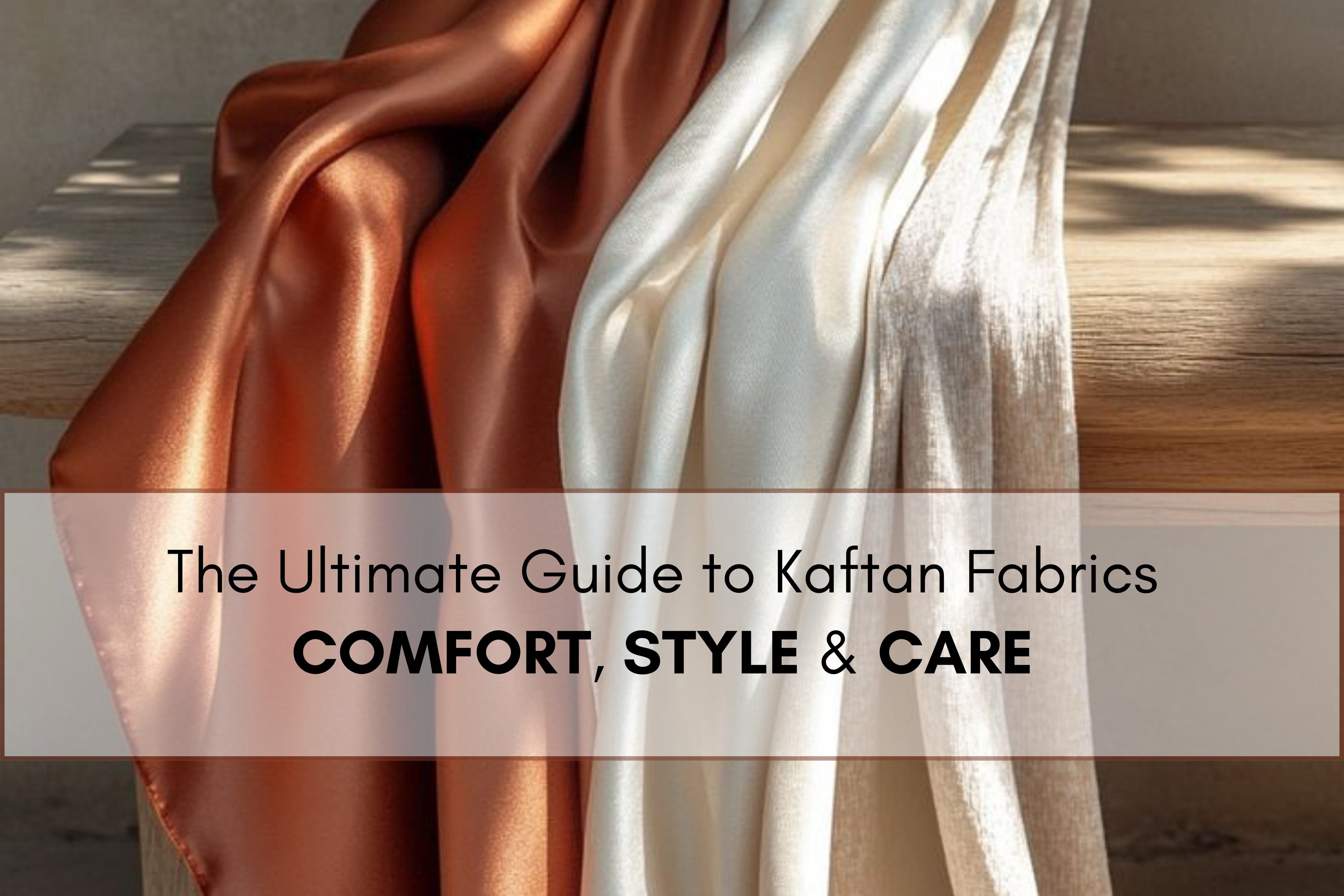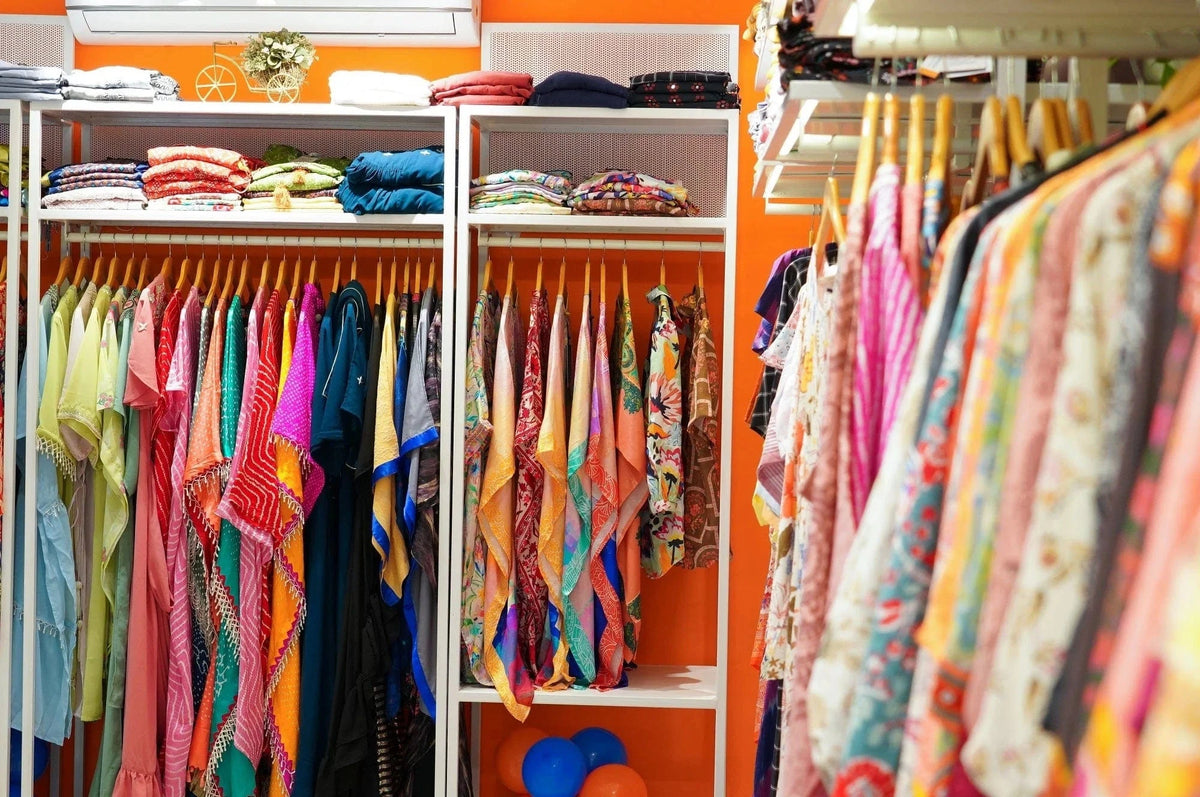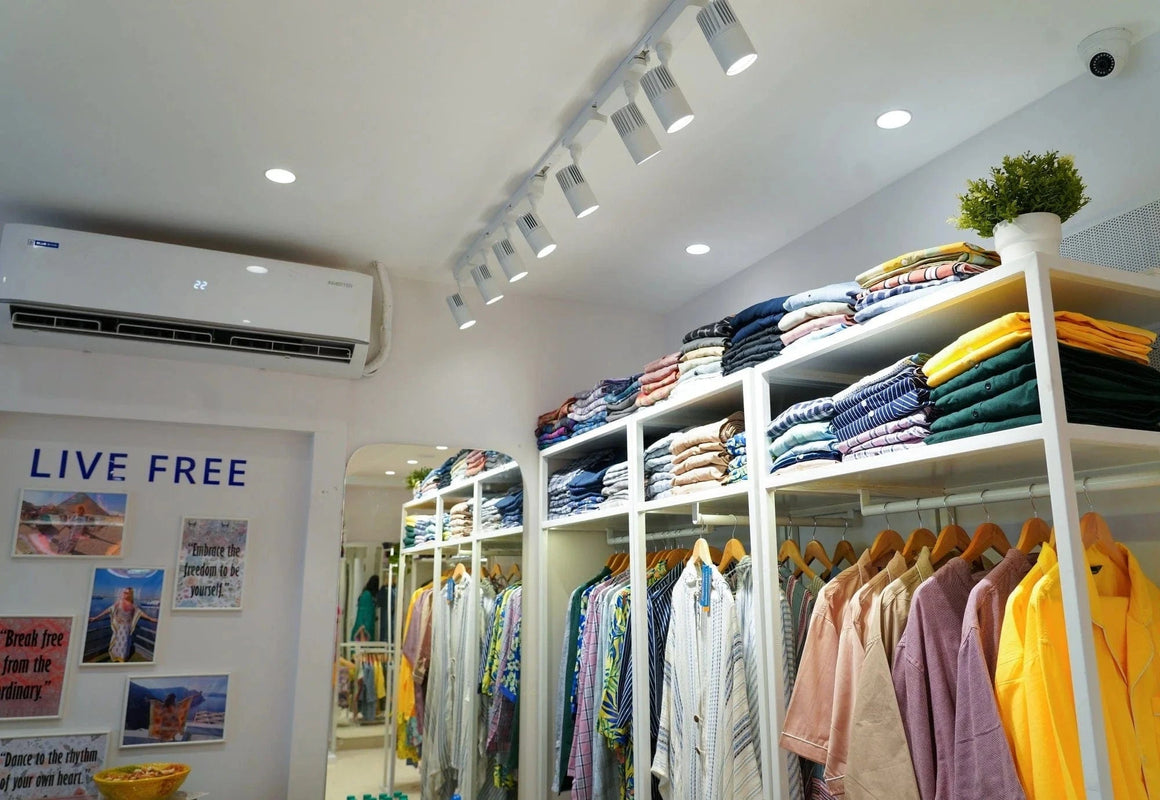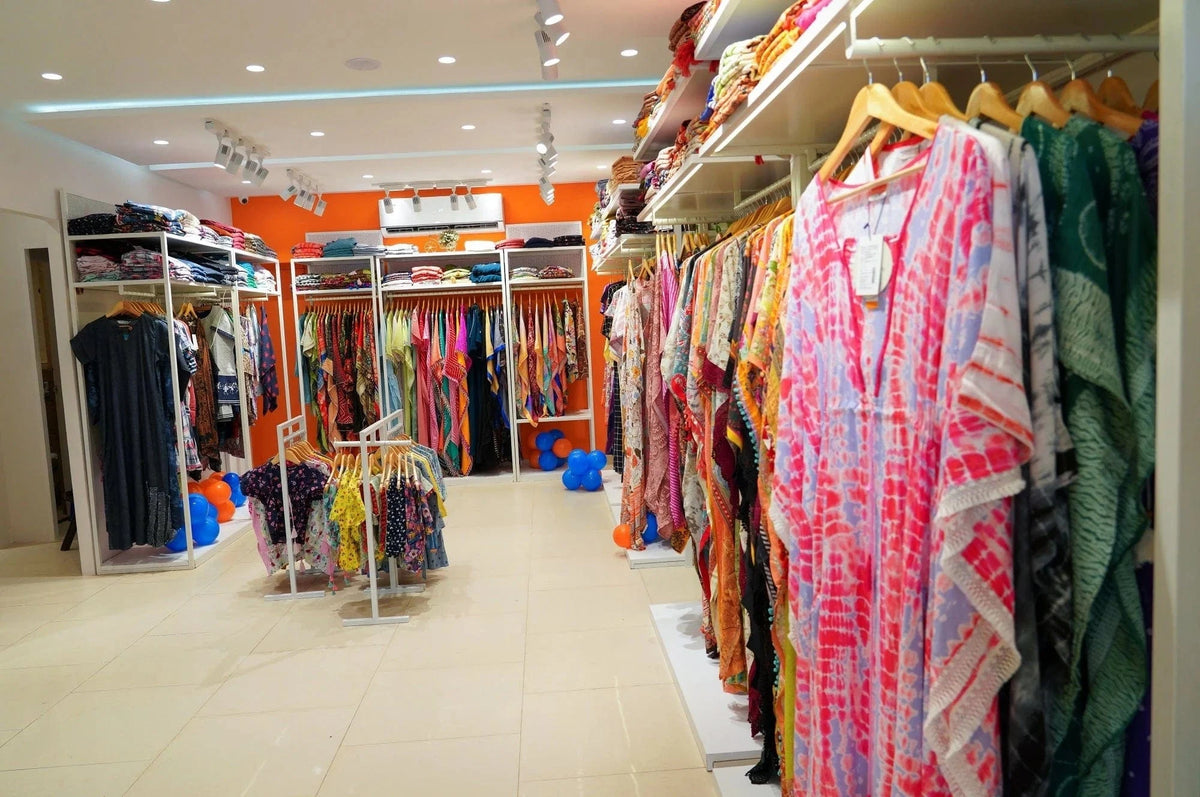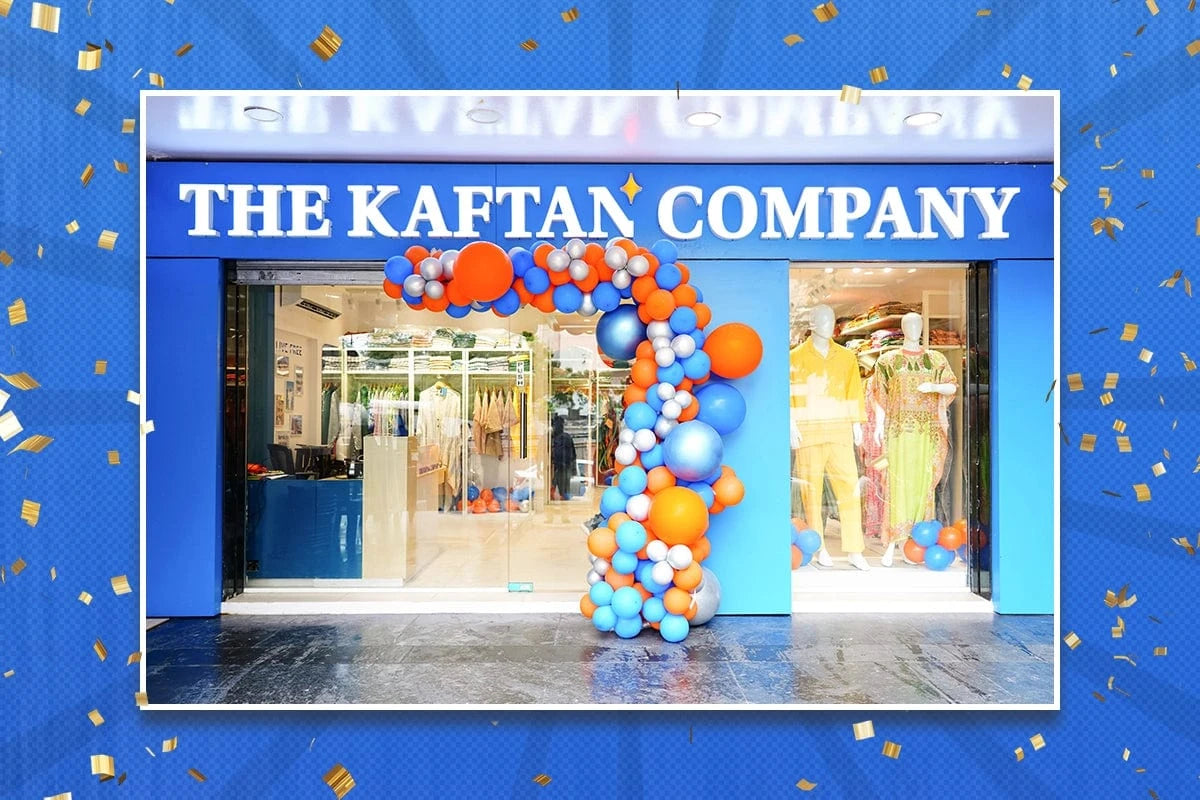The kaftan, a garment steeped in millennia of history, continues to captivate with its effortless elegance and remarkable versatility. Originating in ancient Mesopotamia as a practical tunic for arid climates, it evolved into a symbol of divine authority in the Ottoman Empire, crafted from imported silks and adorned with cosmic symbolism. In Morocco, it became a ritualistic bridal garment, intricately tailored and passed down as an heirloom imbued with spiritual significance. During the Safavid dynasty, Persian kaftans transformed into wearable poetry, embodying luxury and introspection. This rich journey underscores the kaftan’s adaptability and its enduring role as a cultural artefact.
In the modern era, the kaftan has undergone a spirited resurgence, moving beyond its brief association with resort wear to become a statement of sartorial liberation from the rigid fashion norms of the 19th century. Pioneers like Paul Poiret and Mariano Fortuny championed its fluid silhouette, celebrating freedom of movement and redefining elegance. Today, from Bali beaches to Dubai galas, the kaftan resonates globally as a garment of cultural dialogue and personal expression. Understanding kaftan materials is essential, as fabric choice shapes its drape, mood, and purpose — embodying a lifestyle of comfort, elegance, and conscious sophistication.
Decoding Kaftan Materials – Your Guide to Comfort and Style
The selection of fabric is a foundational decision when it comes to kaftans, as it dictates the garment's inherent mood, its tactile sensation, how it moves with the body, and ultimately, the occasions for which it is best suited. This section delves into the most popular kaftan materials, exploring their unique characteristics and how they contribute to the kaftan's enduring appeal.
Cotton Kaftans: Breathability and Timeless Comfort Combined
Cotton kaftans are celebrated for their natural breathability, lightweight feel, and excellent absorbency, making them supremely comfortable and soft against the skin. The natural properties of cotton make it an ideal choice for warm climates, as its open structure facilitates air circulation, keeping the wearer cool and dry even in humid conditions. This adaptability extends to all seasons; cotton can be effortlessly layered for warmth in cooler months without adding unnecessary bulk, establishing it as a versatile year-round wardrobe staple. Furthermore, cotton is hypoallergenic, making it a gentle and suitable option for individuals with sensitive skin. Its known durability and strength ensure that a cotton kaftan is a long-lasting addition to any collection. The fabric's inherent structure also allows for intricate detailing such as embroidery, tassels, and patchwork, which can significantly enhance its aesthetic appeal and unique character.
For styling, cotton kaftans are perfect for casual outings and relaxed settings, offering an effortless sense of style that is ideal for beach strolls, open-air markets, resort mornings, school drop-offs, book fairs, and leisurely Sunday lounging. With the thoughtful addition of the right accessories, a cotton kaftan can seamlessly transition into a maxi dress, elevating its casual charm for more refined daytime looks. They are also an excellent choice for work from home attire, providing a harmonious blend of comfort and a polished appearance suitable for virtual meetings. To complete a relaxed yet put-together ensemble, cotton kaftans pair beautifully with flat sandals, espadrilles, or white sneakers.
Silk Kaftans: Luxurious Flow for Glamorous Occasions
Silk kaftans elevate the garment to a truly sophisticated realm, offering a subtle power, a luminous glow, and a theatrical movement that captures attention. Silk is inherently luxurious and exceptionally lightweight, boasting an incredibly smooth texture and a graceful drape that flows beautifully with every step. This material is renowned for its vibrant color absorption, allowing prints and hues to come alive with striking intensity and depth. Despite its delicate appearance, silk possesses remarkable temperature-regulating properties, making it a practical choice for both warm and cooler weather, adapting to the wearer's needs. As one of the strongest natural fibers, silk retains its shape remarkably well, contributing significantly to the garment's longevity and enduring beauty.
Styling a silk kaftan positions it as the quintessential choice for glamorous events such as garden brunches, yacht getaways, honeymoon dinners, and art gallery soirées. It is also the ideal fabric for formal events, opulent evening receptions, and elevated festive looks, exuding an undeniable aura of sophistication. For a truly opulent statement, a silk kaftan pairs exquisitely with gold stilettos, intricately embroidered juttis, a shimmering clutch, and bold statement jewelry, creating a cohesive and luxurious ensemble. Beyond formal settings, silk kaftans can also be styled for resort dinners or beachside cocktails, offering a versatile blend of luxury and ease that transitions seamlessly. To heighten the evening glamour, consider silk kaftans in rich, darker shades such as black, deep crimson, or navy.
Linen Kaftans: Effortless Grace with Natural Texture
Linen kaftans, crafted from natural fibers derived from the flax plant, are highly prized for their exceptional coolness and breathability, making them particularly well-suited for hot climates. The characteristic loose weave of linen ensures maximum airflow, contributing to its comfortable feel. Linen boasts high moisture absorbency and dries quickly, which is a significant advantage in humid conditions, helping the wearer stay at ease. This fabric is renowned for its remarkable durability and strength; linen kaftans are long-lasting garments that paradoxically become softer and more beautiful with each wear and wash, maturing gracefully over time. It is also naturally antifungal and antimicrobial, properties that contribute to preventing odors and maintaining freshness. The material offers a distinct, relaxed, textured appearance that inherently exudes casual elegance, making it a favorite for those who appreciate subtlety.
A linen kaftan is an excellent choice for summer travel and for cultivating a seamless profile. It can be paired with white sneakers for comfortable city strolls, or with espadrilles and a straw tote for an easy transition from a beach outing to a boardwalk promenade. Mid-length linen kaftans offer unmatched versatility for day-to-night transitions, striking a perfect balance between structured style and subtle comfort. For a cool and sophisticated ensemble, wearing a linen kaftan with straight linen trousers creates a cohesive and elegant silhouette. These garments are also ideally suited for garden parties, brunches, and relaxed city explorations, embodying a refined yet laid-back aesthetic.
Beyond the Basics: Exploring Other Kaftan Fabrics
Beyond the core trio of cotton, silk, and linen, a diverse array of other kaftan materials offers distinct properties and styling possibilities, each contributing to the kaftan's remarkable versatility.
Rayon and Viscose
These semi-synthetic fabrics are celebrated for offering affordable elegance, providing the luxurious drape and fluid movement often associated with silk, combined with the breathability reminiscent of cotton, all without the higher price point. Rayon and viscose are fluid and forgiving, making them popular choices for various prints as they dye beautifully. They are known for their lightweight nature, silky feel, and moderate breathability, though it is worth noting that they may wrinkle easily. These fabrics are best suited for travel days, thoughtful gift-giving, casual workwear, and for elevating everyday wear into a statement of staycation glamour.
Chiffon and Georgette
These fabrics impart an ethereal lightness and a sheer quality to kaftans, characterized by a delicate drape that flows gracefully with every movement. Chiffon crepe fabric, specifically, offers no stretch, contributing to a structured yet fluid silhouette. Both chiffon and georgette are notably lightweight and breathable fabrics, often made from polyester or silk. They are ideal for creating flirtatious silhouettes with flutter sleeves and billowy trains. These fabrics are best for sunset ceremonies, henna nights, rooftop soirees, and destination events, where their delicate nature can truly shine. They are also exceptionally popular as beach cover-ups, offering stylish yet practical options for poolside lounging or seaside strolls.
Crepe and Jersey
Crepe fabrics offer a unique texture and possess the ability to hold structure without stiffness, moving with a gentle bounce. Crepe can be made from luxurious silk or a practical rayon/polyester blend. Jersey, on the other hand, is celebrated for its soft stretch and body-skimming grace, providing ultimate comfort and remarkable wrinkle resistance. It is often found in a cotton/modal blend or as 100% cotton. Crepe kaftans are ideal for gallery openings, travel days, and creative professional settings, offering a minimalist yet memorable statement. Jersey kaftans are perfect for casual wear, prioritizing comfort, and are excellent for layered looks, lounging at home, or relaxing at the beach.
Velvet
Velvet is a rich, luxurious, and heavy fabric characterized by a plush, high pile, making it an ideal choice for cooler months and formal wear. Its composition can vary widely, including fibers such as silk, cotton, polyester, rayon, wool, or mohair. A notable characteristic of velvet is its susceptibility to compression and creasing, which can sometimes appear as white stains. Velvet kaftans are best for formal events, opulent evening receptions, winter gatherings, high holidays, weddings, launch parties, and baby showers, where they exude a regal elegance and grandeur.
The careful consideration of kaftan materials extends beyond their functional attributes to their ability to set a mood and enhance a lifestyle. The way a fabric feels against the skin, how it drapes, and the visual statement it makes are deeply intertwined with the wearer's experience. For instance, the casual comfort of cotton might evoke a "slow and sunny day," while the lustrous flow of silk might suggest a desire for the world to take notice. This means that when selecting a kaftan, one is not merely choosing a garment but curating an experience, aligning the fabric with a desired feeling or occasion. This approach allows for a deeper connection with personal aspirations and emotional well-being, elevating the act of dressing into a form of self-expression.
Furthermore, the choice of fabric also speaks to the garment's enduring value and its alignment with sustainable fashion principles. The durability and longevity of materials like linen, which becomes softer with each wear, or the affordable elegance of rayon, which offers lasting quality, transform a purchase into a long-term investment. This addresses the growing consumer desire for quality, durability, and reduced environmental impact, shifting away from disposable fashion. By focusing on the inherent longevity of high-quality fabrics, the perceived value of kaftans is significantly enhanced, fostering a sense of responsible luxury and a more mindful approach to one's wardrobe.
The Timeless Appeal of the Black Kaftan
The black Kaftan stands as an indispensable wardrobe staple, renowned for its unparalleled elegance and remarkable versatility across a spectrum of occasions. It is a garment that transcends fleeting trends, offering enduring style that is both classic and contemporary. The enduring appeal of black Kaftans lies in their unmatched adaptability, transitioning effortlessly from casual settings to formal events, making them a true chameleon in any wardrobe. Beyond adaptability, the color black exudes elegance, glamour, and timeless style, positioning the black Kaftan as a statement of understated luxury. The free-flowing design, combined with the slimming effect of black, creates a universally flattering silhouette, ensuring comfort and confidence for every wearer. Fabric choice significantly impacts its elegance; cotton, especially Egyptian cotton or cotton jersey, offers everyday refinement, while silk or imitation silk brings luxurious sheen for formal occasions. Velvet lends opulence for winter or evening events, and lace adds delicate intricacy. Pleated fabrics provide structure with contemporary flair, and embellishments elevate kaftans intended for luxury evening wear or modest parties.
Styling showcases the black Kaftan’s remarkable adaptability: simple flats or sneakers for everyday wear; tailored trousers and structured Kaftans for office settings; belts, heels, and fine jewelry for evening glamour. Luxurious fabrics like silk, satin, velvet, or embellished designs enhance its impact, while darker hues like black, crimson, or navy heighten its sophistication. Lightweight black Kaftans are perfect for resorts, serving as chic cover-ups or elevated outfits with accessories. Black acts as a foundation for personal expression through styling, accessories, and fabric choices. The growing popularity of kaftans reflects a broader societal shift toward comfort, flexibility, and effortless style, especially post-pandemic. Their ability to transition from leisure to refinement highlights their timeless relevance and broad appeal, positioning kaftans as versatile, stylish, and comfortable essentials for modern, conscious wardrobes.
The Kaftan Care Guide – Preserving Your Garment's Beauty
Meticulous care is not merely about maintaining the appearance of your kaftans; it is about extending their life and preserving their inherent beauty and value. This commitment to longevity aligns perfectly with the principles of sustainable fashion and conscious consumption, transforming a garment into a lasting investment that can be cherished for years.
General Care Principles
Always Check Care Labels: This is the most crucial rule for garment care. Each kaftan, depending on its kaftan materials and any embellishments, will have unique care requirements. Ignoring these instructions can lead to irreversible damage, compromising the fabric's integrity and the garment's overall aesthetic.
Gentle Handling: Kaftans, particularly those crafted from delicate fabrics or featuring intricate embellishments, demand a gentle touch. Avoid harsh rubbing or scrubbing, especially around beaded or embroidered areas, to prevent damage to the delicate threads and adornments.
Avoid Overwashing: Unless heavily soiled, kaftans do not require washing after every wear. Promptly spot clean minor stains and allow garments to air out between uses. Overwashing can prematurely weaken fabric fibers and cause colors to fade over time, diminishing the garment's vibrancy and lifespan.
Fabric-Specific Care Instructions
The specific care regimen for a kaftan is largely determined by the kaftan materials.
Cotton Kaftans:
-
Washing: Cotton kaftans are generally easy care. They can typically be machine washed in cool or cold water on a gentle cycle. For more delicate or embellished cotton kaftans, hand washing them inside out with a mild detergent is recommended. It is crucial to avoid hot water, as it can cause shrinkage.
-
Drying: Air dry flat on a clean towel or hang dry on a padded hanger, away from direct sunlight, to maintain shape and prevent color fading. Avoid wringing the fabric, as this can distort its shape.
-
Ironing: Cotton kaftans can be ironed on high heat while slightly damp, or on a low heat setting if dry. Steaming is often a preferred, gentler approach for wrinkle removal.
Silk Kaftans:
-
Washing: Silk kaftans are delicate and are best hand washed in cold water using a mild, pH-neutral detergent. Do not soak silk garments. It is imperative to avoid chlorine bleach, as it can damage silk's natural fibers. If the care label explicitly permits, a machine wash on a delicate cycle in a mesh bag is an option.
-
Drying: Air dry flat or hang on a padded hanger, keeping the garment away from direct sunlight, which can cause significant fading and damage. Never tumble dry silk, as the high temperatures can lead to irreversible shrinkage or damage.
-
Ironing: Use a low heat setting, preferably with steam or a pressing cloth, and iron the garment inside out. Ironing when slightly damp often yields the best results for wrinkle removal.
Linen Kaftans:
-
Washing: Linen kaftans should be hand-washed or machine-washed on a low temperature (cold or lukewarm) with a mild, pH-neutral detergent. Crucially, avoid bleach and fabric softeners, as these can severely damage linen fibers.
-
Drying: Air dry flat or hang dry on a padded hanger, away from direct sunlight. Removing the garment from the dryer while still damp helps to minimize wrinkles.
-
Ironing: Iron linen kaftans while still slightly damp on the reverse side of the fabric, using a low heat/steam setting. Embracing linen's natural crinkle texture can also be part of its charm and reduce ironing needs.
Rayon/Viscose Kaftans:
-
Washing: Hand washing is highly recommended for rayon garments due to their delicate nature when wet. If machine washing is absolutely necessary, place the kaftan in a mesh bag, use cold water, and select a delicate cycle with a low spin. A gentle detergent should be used, and chlorine bleach must be avoided.
-
Drying: Air dry flat or hang on a padded hanger. It is critical to never machine dry rayon, as the heat can destroy the fabric and cause significant shrinkage.
-
Ironing: Steaming is the preferred method for removing wrinkles from rayon. If ironing, use medium heat, iron inside out, and ideally use a pressing cloth for protection to prevent shiny spots.
Chiffon/Georgette Kaftans:
-
Washing: These fabrics should be hand-washed or machine-washed on a gentle cycle with cold water and a mild detergent.
-
Drying: Air dry flat or hang dry. Avoid wringing or twisting, which can damage the delicate fibers and distort the garment's shape.
-
Ironing: Use a low iron setting, and always use a pressing cloth to prevent direct heat contact and scorching, which can damage the sheer fabric.
Crepe Kaftans:
-
Washing: For silk crepe, machine wash warm with like colors and a mild detergent. For crepe made from rayon/polyester blends, machine wash cold, ideally in a laundry bag to protect the fabric.
-
Drying: Silk crepe can be tumble dried low or line dried. Rayon/polyester crepe should be line dried.
-
Ironing: Use a warm iron on a silk setting for silk crepe. For rayon/polyester crepe, a medium iron setting is appropriate.
Jersey Kaftans:
-
Washing: Jersey kaftans can typically be machine washed at 40°C or with a low heat dry setting. For tie-dyed items, it is advisable to wash them separately for the first wash to prevent color bleeding.
-
Drying: Line dry or use a low heat dry setting.
-
Ironing: A medium iron setting is usually sufficient for jersey fabrics.
Velvet Kaftans:
-
Washing: Always check the care label, as velvet composition varies significantly. Silk velvet typically requires professional dry cleaning. Velveteen, which is often a blend of cotton, polyester, or rayon, can be hand-washed. If machine washable, use a gentle cycle with cold water. Avoid bleach and fabric softeners, as these can damage the delicate nap of velvet.
-
Drying: Avoid machine dryers entirely, as heat can be highly detrimental to velvet.
-
Ironing: Steaming is crucial for removing creases from velvet; direct ironing should be avoided at all costs, as it can crush the pile and leave permanent imprints.
Storage Tips
Proper storage is as vital as proper washing for the longevity of your kaftans. Store kaftans in a cool, dry place, away from direct sunlight or heat sources, which can cause fading or fabric damage over time. Use padded hangers to help maintain the garment's original shape and prevent shoulder distortion or stretching. For heavy or intricately embellished kaftans, it is best practice to fold them carefully with acid-free tissue paper. This prevents creases and protects delicate embellishments from pressure marks. Finally, utilize breathable garment bags, ideally made from 100% cotton, to protect kaftans from dust, insects, mold, and moisture. Periodically airing out your kaftans (every 6-12 months) can further promote their longevity and freshness.
The extensive and specific care instructions for each kaftan material clearly indicate that these garments are designed for longevity rather than disposability. The consistent emphasis on gentle washing, proper drying, and careful storage underscores a commitment to enduring quality. This approach effectively reinforces a sustainable fashion narrative, demonstrating that the brand values the lasting quality of its products and implicitly encourages customers to treat their kaftans as cherished, long-term investments rather than fleeting trends. Such a strategy builds significant trust and aligns with the growing consumer demand for quality and conscious consumption, fostering repeat business and brand loyalty.
The spectrum of care requirements, from highly delicate fabrics like silk and velvet (often recommending hand washing or dry cleaning) to more robust kaftan materials like cotton kaftan and jersey (noted for being "easy to care for" and machine washable), mirrors the kaftan's versatility across various occasions, from luxurious galas to comfortable loungewear. By offering clear, differentiated kaftan care guide instructions, it is communicated that while kaftans offer unparalleled luxury and elegance, many are also designed for practical, modern lifestyles. This proactive approach addresses potential consumer concerns about high-maintenance garments, making kaftans more accessible and appealing for daily wear, not just special occasions. It positions the brand as understanding and catering to the realities of contemporary living, where both elegance and ease are highly valued.
Kaftan For All
The kaftan, a garment of profound historical and cultural significance, has seamlessly transitioned from ancient necessity to a modern emblem of comfort, style, and conscious living. Its journey from Mesopotamia to global runways underscores its remarkable adaptability and enduring appeal. Understanding the diverse world of kaftan materials is key to unlocking its full potential, allowing individuals to select garments that perfectly align with their lifestyle needs and aesthetic desires.
From the breathable fabrics of cotton kaftans, ideal for everyday elegance and work from home comfort, to the luxurious flow of silk kaftans that grace the most glamorous occasions, each fabric tells a unique story. Linen kaftans offer effortless chic for summer escapades, while other materials like rayon, chiffon, crepe, jersey, and velvet expand the kaftan's versatility across a myriad of settings. The black Kaftan, in particular, stands out as a timeless staple, offering unparalleled elegance and acting as a versatile canvas for personal expression across casual, professional, and formal events.
Crucially, the longevity and sustained beauty of these garments hinge on diligent care. A comprehensive kaftan care guide, tailored to specific kaftan materials, transforms a purchase into a cherished investment, reflecting a commitment to sustainable fashion. This meticulous approach to garment care not only preserves the kaftan's inherent qualities but also bridges the perceived gap between luxury and practicality, making these exquisite pieces accessible for contemporary living. The kaftan, therefore, is more than just clothing; it is a statement of individuality, a celebration of comfort, and a testament to enduring style, inviting wearers to express themselves with grace and ease.

